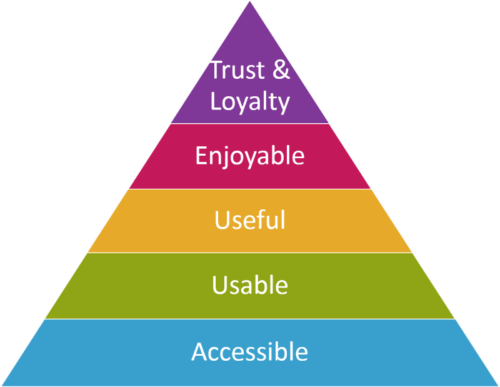The Importance of Incorporating User Experience into Your Products
4 MIN READ
08/04/2015 | Human-Centered Design

You’re Brilliant.
You’ve come up with an idea for a product that you know is going to Change the World. You have a team of technicians, developers, designers, engineers, and managers bringing your vision to life. It’s going to be amazing.
Before you get too far, have you thought about your users and how they will experience your product? More importantly,
has your team answered the following questions:
“Who are our users?”
“What do they want?”
“What would they do?”
“Will they notice this?”
“Will they get confused by this?”
The answers to these questions have weighty implications for how your product should turn out because they are the most important person involved with the product: the user.
Unfortunately, user considerations are often brushed aside and answers are based on assumptions, which are often incorrect. Don’t panic though, a User Experience (UX) team can help you ensure your product is a success. They ensure these questions are addressed with user-centered design techniques throughout the entire process.
What is UX?
There is a lot of debate about how to properly define UX – is it a task? A process? A role for a person to fulfill?
Leaving the debate about specifics for another blog, the goals of the UX team can be represented in the following graphic.

This “hierarchy of needs” illustrates the aspects of a product or experience that must be met for good user experience.
1. Accessible: If people can’t find, get to, or set up your product, then nothing else matters.
2. Usable: Users must be able to carry out the functions of your product with minimal error.
3. Useful: If users don’t have a use for your product, then they won’t have any desire or need for it and ultimately, won’t use it.
4. Enjoyable: Finding joy in a product comes from the more visceral, emotion-provoking elements like the aesthetics, the verbiage, and the interaction. These elements can have huge implications for how a user perceives the usability and usefulness of your product.
5. Trust and loyalty: Fostering feelings of trust and loyalty within your users means that users feel comfortable and confident investing time, effort, and even personal information into your product and brand as a whole. Trust and Loyalty keeps users coming back and recommending your product to others. It’s a feeling of comradery and reliance on your product and it is usually the end goal of achieving excellent UX
How do I UX?
UX professionals have numerous tools to help you achieve every one of those goals but you may be wondering: “When do I apply such tools?” and the answer is: throughout the entire process.
Product development is typically divided into three phases: Discovery, Design, and Implement and Evaluate. Throughout each of these phases, your team should be able to answer the following questions:
Discovery Phase
“Who are our users?”
“What do they want?”
“What do they need?”
Design Phase
“How will users use this?”
“Will they get confused by this?”
“Where would they look for this?”
Implement and Evaluate
"How do they like it?"
"Are they using it the way we thought?"
"How can we improve it?"
Now that you should have a better understanding of what UX is, why it is important, and how it should be integrated throughout the design process, your product really is going to change the world.
Stay tuned for future blogs that will explore specific user-centered design techniques and helpful tips on how to make the most out your UX team.
.png?width=150&name=Jason%20Stoner-square%20(2).png)
Written By:
Jason Stoner
Sr. Director of Transformation
you might like these too
Accelerating UI Development with MetroStar's Comet and AI
AI/ML | Human-Centered Design | Innovation Lab
Delivering Real-Time Insights for Faster DoD Mission Planning
MetroStar Culture | Human-Centered Design | Innovation Lab
Five 2024 GovCon Tech Trends: Perspectives from Six Industry Experts
Enterprise IT | Feature | Cyber | AI/ML | Human-Centered Design
want to stay in the loop?
Never miss a thing by signing up for our newsletter. We periodically send out important news, blogs, and other announcements. Don’t worry, we promise not to spam you.
